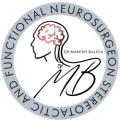Epilepsy is a chronic neurological disorder characterized by recurrent, unprovoked seizures. These seizures result from sudden, excessive electrical discharges in a group of brain cells. Find Here Advance Epilepsy treatment in South Mumbai. The condition can affect people of all ages, and its symptoms and severity vary widely. Understanding epilepsy symptoms and exploring its treatment options are crucial for managing the condition effectively.
Symptoms of Epilepsy
The primary symptom of epilepsy is recurrent seizures. Seizures are generally categorized into focal and generalized seizures, each with distinct characteristics.
Focal Seizures
Focal seizures, also known as partial seizures, originate in one area of the brain. These seizures can be further divided into:
- Focal Seizures Without Loss of Consciousness: Also called simple partial seizures, these do not cause a loss of consciousness. Symptoms may include:
- Jerking movements in one part of the body
- Unusual sensory experiences, such as tingling or a sudden sense of fear
- Changes in the way things look, smell, feel, taste, or sound
- Focal Seizures With Impaired Awareness: Previously known as complex partial seizures, these affect a larger area of the brain and can alter consciousness or awareness. Symptoms might include:
- Staring blankly into space
- Performing repetitive movements, such as hand rubbing, chewing, or walking in circles
Generalized Seizures
Generalized seizures involve both hemispheres of the brain from the onset. They include several subtypes:
- Absence Seizures: Also called petit mal seizures, these cause brief lapses in consciousness, often mistaken for daydreaming. Symptoms include:
- Sudden cessation of activity
- Staring spells
- Subtle body movements, such as eye blinking or lip smacking
- Tonic-Clonic Seizures: Formerly known as grand mal seizures, these involve a combination of muscle stiffening (tonic phase) and rhythmic jerking (clonic phase). Symptoms include:
- Loss of consciousness
- Muscle rigidity followed by convulsions
- Tongue biting or loss of bladder control
- Atonic Seizures: These cause a sudden loss of muscle tone, leading to collapses or falls, also known as drop attacks.
- Myoclonic Seizures: Characterized by sudden, brief jerks or twitches of the arms and legs.
- Tonic Seizures: Involve sudden stiffening of the muscles, usually affecting the back, arms, and legs, which can cause falls. Find Here Advance Epilepsy treatment in South Mumbai
Treatment of Epilepsy
Treating epilepsy typically involves a combination of medication, lifestyle adjustments, and in some cases, surgery. The goal is to control seizures with minimal side effects.
Medications
Anti-seizure medications, also known as antiepileptic drugs (AEDs), are the cornerstone of epilepsy treatment. These medications aim to reduce the frequency and severity of seizures. The choice of medication depends on various factors, including the type of seizures, the patient’s age, overall health, and potential side effects. Common AEDs include:
- Phenytoin (Dilantin)
- Carbamazepine (Tegretol)
- Valproate (Depakote)
- Lamotrigine (Lamictal)
- Levetiracetam (Keppra)
- Topiramate (Topamax)
Finding the right medication and dosage can be a trial-and-error process. Regular monitoring by a neurologist is crucial to manage side effects and adjust treatment as necessary. Find Here Advance Epilepsy treatment in South Mumbai
Lifestyle Modifications
Lifestyle changes can significantly impact seizure control and overall well-being for individuals with epilepsy. Some recommended adjustments include:
- Sleep: Maintaining a regular sleep schedule is vital, as lack of sleep can trigger seizures.
- Diet: Some individuals benefit from a ketogenic diet, high in fats and low in carbohydrates, which has been shown to reduce seizures in some cases.
- Stress Management: Techniques such as yoga, meditation, and mindfulness can help manage stress, a known seizure trigger.
- Avoiding Triggers: Identifying and avoiding personal seizure triggers, such as flashing lights or specific sounds, is essential.
Surgery
For individuals whose seizures are not controlled by medication, surgery may be an option. Surgical interventions aim to remove or alter the area of the brain where seizures originate. Common surgical procedures include:
- Resective Surgery: Involves removing the portion of the brain where seizures begin, typically used for focal seizures.
- Laser Interstitial Thermal Therapy (LITT): A minimally invasive procedure that uses lasers to destroy the seizure-producing area.
- Corpus Callosotomy: Involves severing the connections between the two hemispheres of the brain to prevent seizure spread, used for severe cases.
Other Treatments
Other treatment options include:
- Vagus Nerve Stimulation (VNS): A device implanted in the chest sends electrical impulses to the brain via the vagus nerve, helping to reduce seizures.
- Responsive Neurostimulation (RNS): A device implanted in the brain detects abnormal electrical activity and responds with electrical stimulation to prevent seizures.
- Deep Brain Stimulation (DBS): Involves implanting electrodes in specific brain areas to modulate neural activity and reduce seizures. Find Here Advance Epilepsy treatment in South Mumbai
Conclusion
Epilepsy is a complex and diverse neurological condition with a wide range of symptoms and treatment options. Understanding the types of seizures and the available treatments can significantly improve the quality of life for individuals with epilepsy. With ongoing research and advancements in medical science, the future holds promise for even more effective and personalized treatment strategies, offering hope to millions affected by this condition. Find Here Advance Epilepsy treatment in South Mumbai






